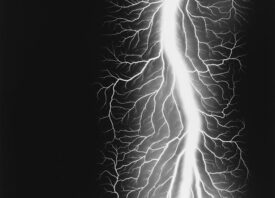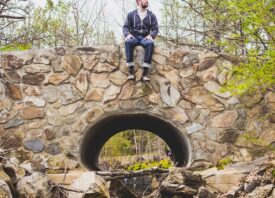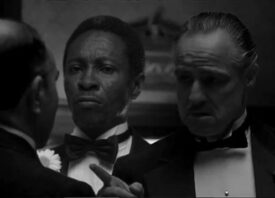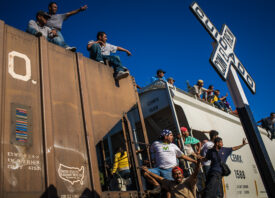Search this site
The Young Voices Telling Mexico’s Border Stories Through Photography

Alejandra Aragon, 2021
The “Chavalxs” project, spearheaded by artist Alejandra Aragón from Ciudad Juárez, Mexico teaches photography to 25 youths in areas like Gómez Farías and Guadalupe. The project offers an authentic view of life across the border, away from racism and xenophobia. These workshops have enabled participants to address and reshape misconceptions about their communities, heavily stigmatized by drug-related violence and a lack of artistic opportunities. By collaborating in places such as San Agustin, Chihuahua, Chavalxs fosters a creative resistance against harmful narratives. We interviewed Alejandra Aragón, Grantee of the Center for Cultural Power’s Border Narratives Project, about this important project.

How do the photographs produced by the project tell a different story about life in border towns compared to the narratives perpetuated by mainstream media?
“Chavalxs deals with the process of how narratives become. Historically, the border has been narrated in a hegemonic voice and sight. I, as a border artist only until recently feel my voice has been heard, although as Spivak points out, I am never sure if my message is
being understood since there are codes regarding language, identity and situated experience that still separates us from those who have had the power to construct history through art and media. So, the same way I received the grant to decentralize the narrative, I went directly to the communities and got them involved in order for me to not be a single voice, but rather a detonator of a wider conversation using art, specifically photography as the medium.
“Violence is a reality that over the years has been the main subject of interest about the border. My intention with this project and my body of work is to question how the narratives become part of the cycle of violence when we think we are giving “visibility” when our work ends up feeding the same system that perpetuates the violence, like it happened in the circulation of images of victims and misery. I have come to understand that the main tool of structural violence carried out not only at this border but in other disputed territories is breaking communities, and images are an active part of that. So, my intention with Chavalxs is not only to tell this story from our own subjectivity. But also confront the conditions that perpetuate violence. So, while we reflect on who we are and the situations of the
place we live in, and how we represent that using photography, we make community and confront the issue that made us vulnerable. We make community and strengthen collective memory.
“This same logic is applied to every image you see of Chavalxs produced by the kids, me or the contributors’ approaches within the classroom, the exhibitions, the curatorship, and the archive. We can make a semiotic analysis of each, but no image reproduces violence, no image is taken without permission, no landscape is stigmatized, and as I decided with the polaroids I gave away to the young people who I knew I could not reach through the workshops, or the efforts we made to bring every kid from the towns to the Juarez major exhibition: because most people photographed in the world never get to hold or see the images that are produced and reproduced of them.”

Beyond photography, what other skills have participants gained from their involvement in the Chavalxs” project?
“A very important fact about Chavalxs is that I am in a way part of the community. These are not random places I just arrived at. Valle de Juárez is the rural area of Ciudad Juarez, my hometown. Gomez Farias is my family’s original town municipality and I wanted to return to the community after doing a project about my father, masculinity and displacements of agricultural towns.
“First, photography is a craft that can help create some sort of income. Some of these young people have gotten jobs doing social photography or other publicity requests and part of this were Daniel Galindo and Professor Villareal who are themselves portrait photographers and shared with the class their strategies to make a living out of this practice.
“I networked and united forces with the people in the community who were already taking action to create third spaces, secure resources, and the wellbeing of their community, like Leon de La Rosa, Joseline Galdean and Alejandro Gonzalez who are collaborators in the project, so Chavalxs only became a part of these efforts.
“I am very proud to say that many of the kids involved got tools to manage their emotions and their psychological state since many young people are dealing with strong PTSD, many have experienced and seen very violent acts committed against their family members or community. So we spoke about our emotions, we tried to use photography to convey them and for some, like Cristian Jasiel Garcia Archuleta, photography became a tool to go out of the house, walk, understand he had a special perspective and talent. The workshop also helped insert him into a community since he lacked a support group.
“For one of the older participants, I am very proud to say the impact was more political. Alejandro Mono Gonzalez, who was part of the workshop in San Agustin, decided to create a community space for young people after experiencing the Chavalxs workshop. So now he, with the help of some youngsters like Jasiel himself, Ivone, Azul, Carolina and Joseline from Chavalxs and other community members have created OKUVAJ. They occupied an abandoned building and fundraised resources to sustain the space.”

pictures. Her father was in jail for most of her life and later died. She does not like to speak much about
it but loves his old school cholo pictures and drawing on her walls. Photos by Azul Zárate Gómez, 2022
How has the work produced by the “Chavalxs” project been received by the public, both within the border towns and in wider circles?
“The Chavalxs exhibitions have been received with great enthusiasm. In Guadalupe, we had the exhibition at the town’s park plaza and after seeing it, the mayor invited us to show it at the Municipality building. This created the space for us to use his interest to make some demands to the local government regarding the needs of the young population.
“Overall, the participants, the collaborators and everyone involved seem very happy with the results. And for me, I cannot explain clearly what it did for my self-esteem and mental state after coming from a major depressive episode after the pandemic and helped me learn even more about how to direct my practice towards more interdisciplinary strategies and forms. And even though it’s not perfect and there is a lot that can be improved as an art or social development project, I hope that everybody involved feels the positive impact in the long term.”
Learn more about the process and reactions in the video documentary of the project.



